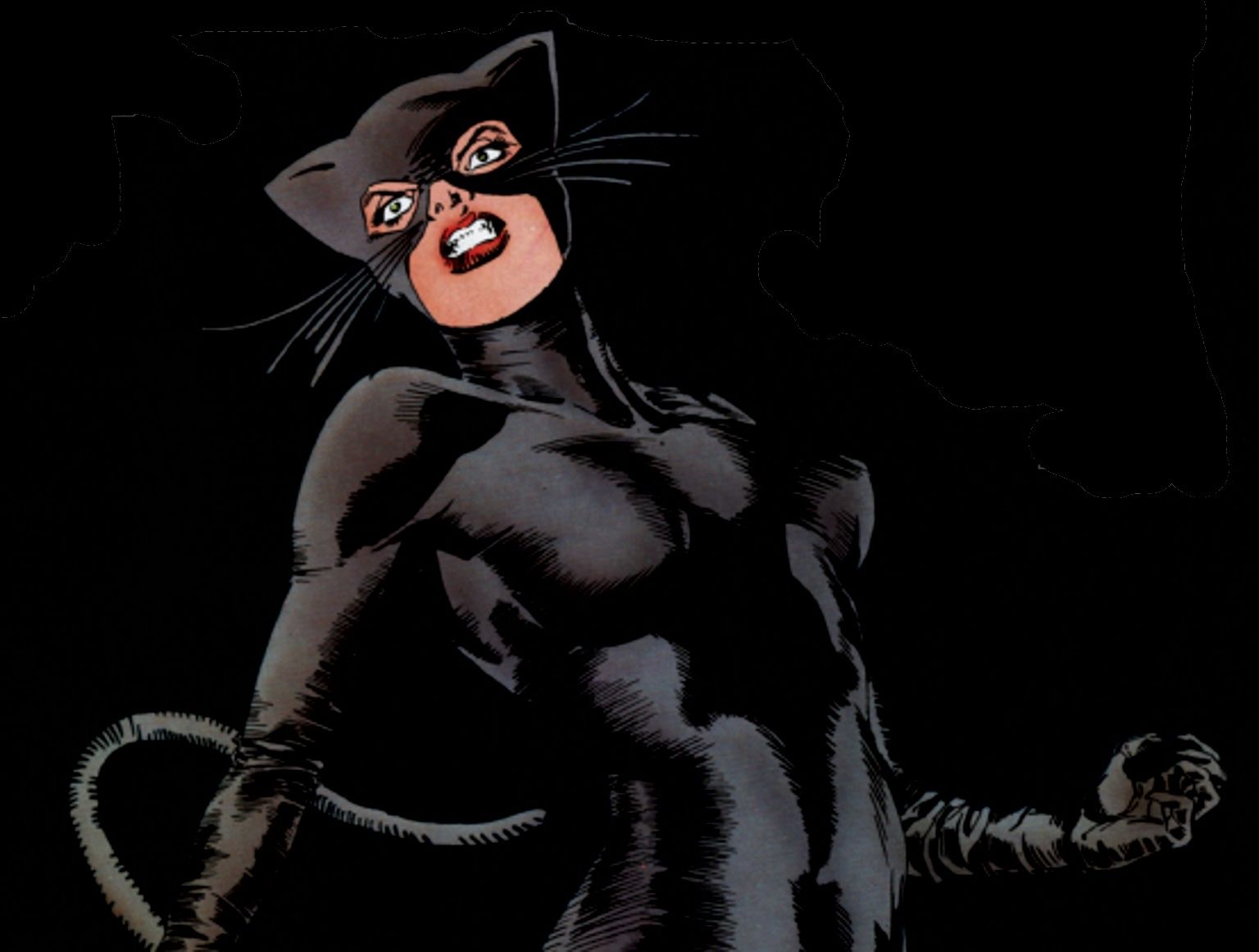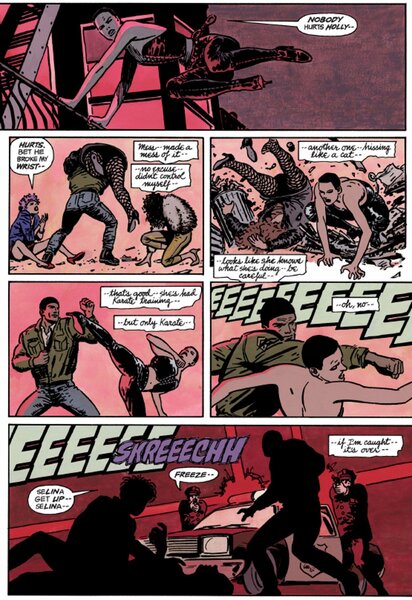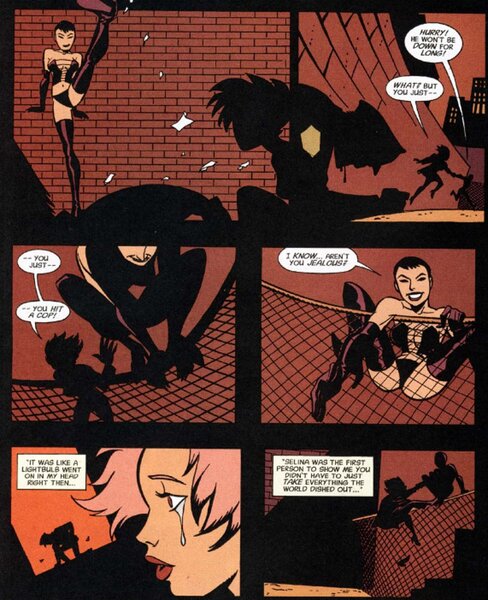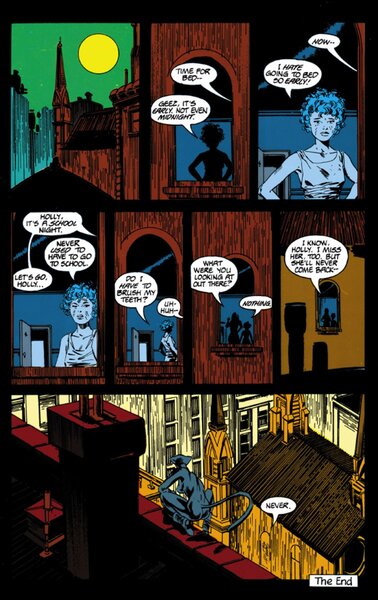Create a free profile to get unlimited access to exclusive videos, sweepstakes, and more!
Catwoman and the case for decriminalization of sex work

With Batman: Year One, Bruce Wayne received a new, fleshed-out origin, but he wasn’t the only one. Selina Kyle also got a fresh backstory detailing her journey to becoming Catwoman. In the new iteration of Selina’s story, she was a sex worker who had bonded with and strove to protect other women.
This makes Selina one of the most prominent comic characters with a canonical history of sex work. Perhaps more importantly, she generally isn’t criminalized for it, which is a huge deal. Over time, she goes to some effort to reinvent herself as an elegant cat thief and antihero, yet she is never so far removed from her old life that she forgets it. Indeed, Catwoman provides significant support and fiscal alternatives to her old friend Holly, making her story one of the most effective cases for the decriminalization of sex work in comics.
Before Year One, there was little in the way of canonical background for Selina Kyle. Besides her overriding interest in cat-themed heists, we simply didn’t know a lot about her. Initially a one-dimensional femme fatale, Catwoman underwent a series of costume changes before ultimately being defined as the complicated protector of the voiceless. However, much of her story entails the use of stereotypes to convey this message, and decriminalization takes a backseat to revenge against pimps.
Meanwhile, Catwoman’s story often references the institutionalized abuse against sex workers at the hands of some police officers that comes up so often in the argument for decriminalization. Without the ability to leverage the legal system against sex workers, it is believed that much of their mistreatment by police would end. Though these stories tend to agree that these abuses are a problem, they seldom illustrate what that means or how to end it beyond this basic acknowledgment.
For instance, in Catwoman: Her Sister’s Keeper, writer Mindy Newell opens the first issue with a police officer saying something incredibly callous about Selina, who lies beaten on the sidewalk. When we discover the violence was perpetrated by her pimp, Stan, it is a police officer who puts her in contact with Ted Grant, who teaches her self-defense and how to fight. In this story, the police are a foil, but they are working on the side of justice and there is no question they are there to help Selina. While many Catwoman comics address police complacency toward violence against sex workers, they may never fully confront the complicity that makes decriminalization so necessary.
Her Sister’s Keeper explores Catwoman’s protective urges over the young Holly Robinson, who is excessively abused throughout the story but seems unable or unwilling to fully confront the realities of her situation. In the end, Catwoman’s solution for Holly is simply to drop her off at a convent with her sister, a nun. This doesn’t take, but, intentionally or not, it does portray some of the absurdity of commonly suggested "solutions" for ending violence against sex workers. Decriminalization, however, offers concrete plans for people like Holly. If standard worker protections were in place, Holly would be able to form plans, which likely would not involve simply being dropped off in a literal nunnery to work her problems out for herself.
Catwoman’s entire reason for existing was retconned in Catwoman Volume 3 to be about her desire to protect the people that the police would not protect. Her primary focus became the protection of other women after reuniting with Holly. Still, this story entails the existence of a serial killer who targets sex workers, and therefore once again entails that many crucial scenes involve the violent murders of these women.
Catwoman is disappointed in Holly for going back into sex work despite having made no attempts to check up on her after the events of Her Sister’s Keeper. This is a bizarrely moralistic stance for a character who has always been known for operating in an ethically gray zone. While this story addresses the bad treatment of sex workers by law enforcement and shows Catwoman offering stable financial alternatives to Holly instead of her prior solution of literally just dropping her off at a convent, the solution to violence against Holly presented therein is still essentially that she must stop being a sex worker to avoid bad situations. By pointing to them to change their lives rather than emphasizing the more glaring fact that a violent killer is given endless access to them as a direct result of our society’s criminalization of their profession, the message of empowerment, while well-intentioned, can come across muddled.
There is little doubt that Selina Kyle, who was trapped in an abusive relationship with a pimp as a direct result of the criminalization of sex work and who helps other women flee from abusive situations, would be all for decriminalization. Many fans have conflicting feelings on the storyline that introduced this element of Catwoman’s past and how it has been handled, but one thing is for certain — showing prominent characters in fiction who have been sex workers and who are not criminalized or victimized for it can be incredibly useful in destigmatizing sex work, and Selina Kyle is the character who comes the closest to succeeding in that portrayal.




























